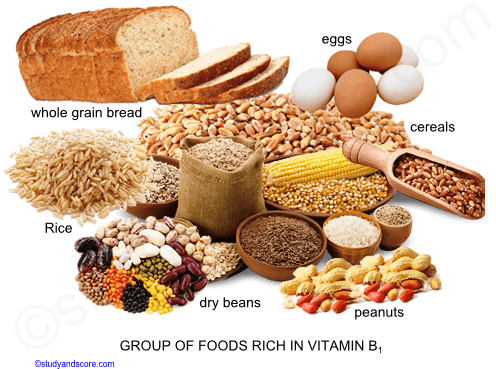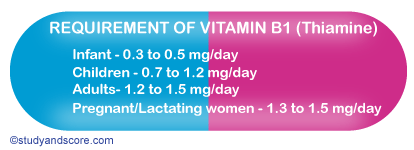Christiaan Eijkman discovered vitamin B1 in 1897. Eijkman was awarded the Nobel Prize in Physiology and Medicine in 1929 for this discovery. Thiamine was the first B vitamin to be discovered by scientists, so the name B1. Thiamine is a water soluble vitamin and is mainly required by the body to mine nenrgy from food. It can be obtained from a vast variety of foods.
Thiamine is very important form proper functioning of body and brain. ATP the energy unit of the body are made with the help of thiamine. Thiamine works as a co factor for majority of the metabolic pathways of the body.
Meats, especially pork and liver are rich in thiamine and account for about one fourth of the average intake. Rice, Dry beans, peanuts and egg are good sources. Enriched and whole grain breads and cereals supply about one third of the daily thiamine intake.

The requirement of thiamine depends on energy expenditure as it is needed to make ATP.

Free thiamine is readily absorbed from the small intestine. It is important to note that very little thiamine or no thiamine is stored in the body tissues and depletion can occur within 14 days. A part of the excess thiamine is excreted in urine or it is destroyed by the enzyme thiaminase.
With the deficiency in vita,min B1 the cell would not be able to get required energy and thus start to function abnormally. initially vitamin b1 deficiency shows up as fatigue, irritability, depression, deadness in leg and constipation. Beriberi, sometimes called “rice-eaters disease” is another deficiency symptom which is often seen in people whose chief diet is refined rice and is the most severe form of thiamine deficiency. Thiamine deficiency may also result in severe problems with central nervous system, muscular system, cardiac conducting system and digestive system.
The following are the functions of Vitamin B1
- Share with your friends! -
Login to post your comment here...
- or with social Account -